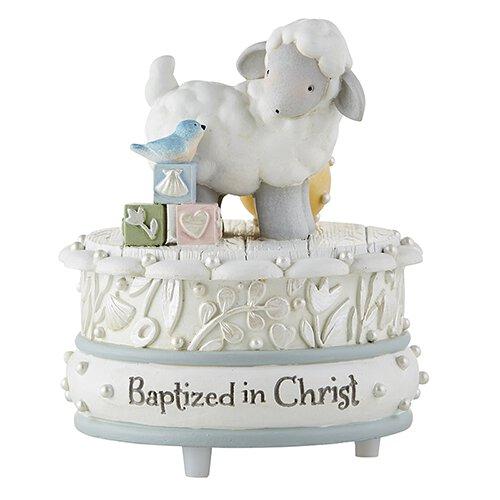
How to Celebrate St. Benedict Day
St. Benedict’s Day
The beginning of summer is rife with celebration. The weather is warm, school is out and in the United States at least, we see Mother’s and Father’s Day, Memorial Day, and the Fourth of July. However, the observance of secular holidays and the warmer days of early summer are not the only cause to celebrate. The Church calendar marches on in ordinary time after Pentecost and provides the faithful an opportunity to both celebrate and cultivate a powerful devotion to St. Benedict of Nursia by observing his feast day on the eleventh of July.
Who is St. Benedict?
While St. Benedict may be casually known by many Catholics as the gray bearded, staff and book wielding monk enrobed in a black habit, his life, example, and Rule provide enumerable insight to both cultivating relation with the Lord and the development of monasticism in the Church.
It is accepted that Benedict (his name meaning “Blessed”) was born in Italy in the year 480. The son of a rich Roman nobleman of Nursia, Benedict received an education of great merit in his younger years but rejected his higher education and natural path to a successful secular vocation to leave Rome in pursuit of a higher good. Benedict did not leave his life and city with the intention of becoming a monastic, however by the providence of God, he met a monk named Romanus. Romanus talked with Benedict about his life’s path, provided him with a habit and served Benedict’s needs frequently during the following three years, in which Benedict spent living as a hermit in a cave.
After growing in character, faith, and relationship with the Lord during those three years, Benedict became revered as a good and holy man, so much so that upon the death of a local monastery’s abbot, the invitation was extended to Benedict to take his place. The saint's latter years are marked with rigorous and disciplined creation, institution and refinement of his “Rule”, a set of standards and practices for those in the monastery to live by. Benedict established at least 12 new monasteries, including the most famous Monastery of Monte Cassino. Continuing to spread even after his death, the Rule became the standard for monastic life throughout Europe, to the extent that St. Benedict is often referred to as the “Father of Western Monasticism”.
Celebrating St. Benedict’s Day
While St. Benedict’s day may not be marked by shamrocks, gift exchanges or egg hunts like other holidays, there are many faithful ways to celebrate the feast of St. Benedict.
St. Benedict’s Rule, while giving birth to western monasticism, was originally written for lay people, and can be a great source to call on for how we might approach our own lives. St. Benedict uses chapters 8-19 of his Rule to discuss and regulate the Divine Office. The Divine Office, known also as the Liturgy of the Hours is a set of prayers which most notably include the psalms, prayed daily at regular intervals by each priest and religious in the Church. St. Benedict’s day makes a great opportunity to learn more about the Divine Office, or simply resolve to pray at least one of the psalms, such as Psalm 23 or Psalm 31.
“Ora et labora” or “Prayer and Work” is a great motto of Benedict in his Rule and followed by Benedictines still today. The meaning of this is that work is a necessary part of a balanced life living in relation with Christ. St. Benedict’s feast day makes for a great time to contemplate how prayer can be implemented concretely throughout our workdays and reflect on how our work is impacting our sanctity.
Benedict is also known for his victories over evil by the power of Christ. After replacing the late abbot at the first monastery, the monks quickly grew tired of his strict rule. To rid themselves of Benedict, they gave him a poisoned chalice. He is recorded as making the sign of the cross over the cup, which instantly shattered, saving him. It is also recounted that after returning to his cave, his life was again jeopardized as a jealous priest nearby sent him poisoned bread. After blessing the bread, a raven swooped in and flew away with the loaf.
Both of these stories are incorporated into the St. Benedict Medal, which is widely known as a powerful devotional tool and prayer to dispel evil. There are many sayings, images, and icons of great significance (including a raven and cup) in the medal and the great saint’s feast day is a fantastic opportunity to purchase either a St. Benedict’s medal or crucifix to wear or add to a home shrine. Even setting aside a short period of time to learn the meaning of some of the inscriptions of the medal such as C S P B or V R S N S M V make for an excellent devotion on St. Benedict’s day
And of course, above all else, asking St. Benedict himself for his powerful intercession in our lives is a great way to celebrate his feast, especially by calling upon him in this following prayer.
“Dear Saint Benedict, I thank God for showering you with His
grace to love Him above all else and to establish a monastic rule
that has helped so many of His children live full and holy lives.
Through the cross of Jesus Christ, I ask you to please intercede
that God might protect me, my loved ones, my home, property,
possessions, and workplace today and always by your holy blessing, that we may never be separated from Jesus, Mary, and the
company of all the blessed. Through your intercession may we
be delivered from temptation, spiritual oppression, physical ills,
and disease. Protect us from drug and alcohol abuse, impurity
and immorality, objectionable companions, and negative attitudes. In Jesus’ Name. Amen.”
St. Benedict, pray for us!







Leave a comment